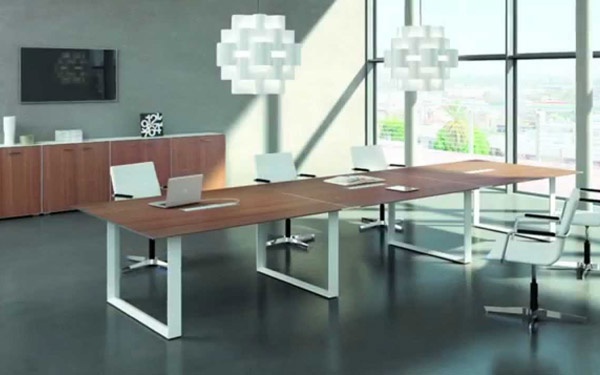Office furniture has come a long way over the years, reflecting the changing needs and design preferences of businesses and workers alike. In this brief history, we'll explore the evolution of modern office furniture, from its humble beginnings to the sleek and ergonomic designs of today.
The Early Days: Functionality Over Aesthetics
The concept of office furniture can be traced back to the 18th century when the Industrial Revolution began to transform the way people worked. In these early days, office furniture was primarily utilitarian, designed for functionality rather than aesthetics. Desks were heavy wooden structures, often equipped with numerous drawers for storage, and chairs were basic, rigid pieces that offered little comfort.
During the late 19th century, as office work became more common, office furniture started to evolve to meet the needs of office workers. The introduction of the typewriter led to the development of the first office desks designed specifically for typists, featuring a smooth writing surface and keyboard placement.
The Rise of Steel and Efficiency
In the early 20th century, the use of steel became a pivotal moment in the evolution of office furniture. Steel offered durability and strength, and it allowed for the mass production of office furniture, making it more affordable for businesses. The invention of the rolling chair with wheels also marked a significant advancement in comfort and mobility within the office space.
Efficiency was a key driver in office furniture design during this era. Desks and workstations were designed with the aim of maximizing productivity, often featuring integrated filing cabinets and accessories. The cubicle, a symbol of the mid-20th century office, was introduced in the 1960s as a response to the need for private workspaces in open office layouts.
The Influence of Technology
As technology continued to advance, so did the design of office furniture. The advent of the computer in the latter half of the 20th century led to the development of specialized computer workstations. Ergonomics became a central concern, as office workers spent increasing amounts of time in front of screens. Adjustable chairs, sit-stand desks, and monitor arms became essential components of modern office furniture.
The concept of open office spaces, popularized in the tech industry, began to shape office design. Modular furniture systems and collaborative workspaces became more prevalent as companies sought to foster creativity and teamwork among employees.
Sustainability and Aesthetics
In recent years, sustainability has become a focal point in the evolution of office furniture. Companies are increasingly concerned about the environmental impact of their office furnishings. As a result, eco-friendly materials, recyclability, and responsible sourcing have become essential considerations in modern office furniture design.
Aesthetics have also played a significant role in the evolution of office furniture. Modern offices are designed not just for functionality but also to create a welcoming and inspiring atmosphere. Sleek, minimalist designs have become popular, with an emphasis on clean lines and a cohesive look throughout the workspace. Natural materials like wood and stone are often used to add warmth and a touch of nature to the office environment.
The Future: Flexibility and Technology Integration
Looking ahead, the future of office furniture is likely to be shaped by two key factors: flexibility and technology integration. The COVID-19 pandemic accelerated the adoption of remote and hybrid work models, emphasizing the need for flexible office furniture that can adapt to changing needs. Furniture that is easy to reconfigure and suited for both individual and collaborative work is likely to be in high demand.
Technology will continue to be a driving force in office furniture design. Integrated power and data connectivity will become standard, allowing for seamless connectivity and charging of devices. Smart furniture that can adjust to user preferences and collect data to optimize the workspace will also be on the horizon.
Conclusion
The evolution of modern office furniture reflects the changing nature of work, from the Industrial Revolution to the Information Age. It has evolved from purely functional, utilitarian pieces to a combination of function, aesthetics, and sustainability. As the future of work continues to evolve, office furniture will undoubtedly follow suit, adapting to the needs and preferences of the modern workforce.
In summary, the history of modern office furniture is a story of adaptation and innovation. From the early days of heavy wooden desks to the sleek and ergonomic designs of today, office furniture has transformed to accommodate the changing world of work. As we move forward, flexibility, sustainability, and technology integration will continue to drive the evolution of office furniture, ensuring that it remains a crucial element of the modern workspace.


No comments yet